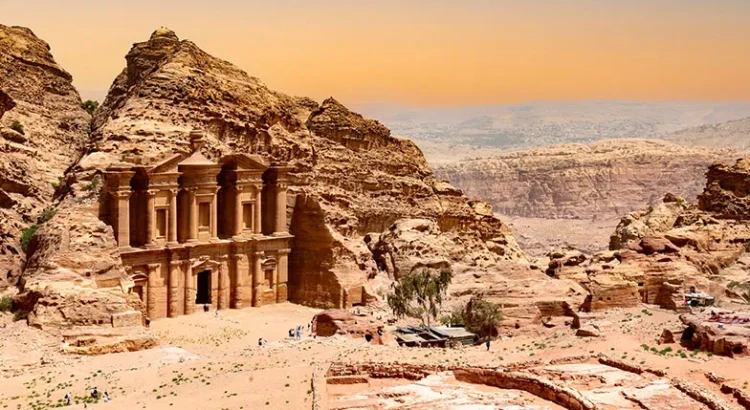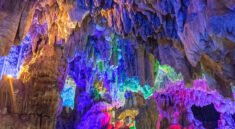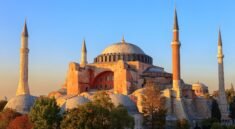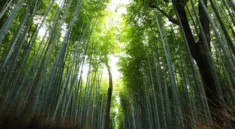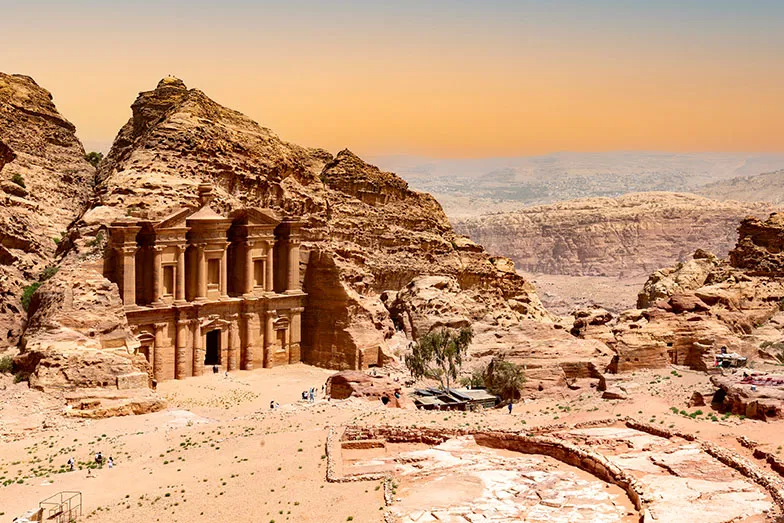
In the arid wilderness of southern Jordan, shrouded in centuries of myth, mystery, and wind-swept sand, lies one of the most awe-inspiring archaeological sites on the planet — Petra. Nicknamed the “Rose City” because of the pink-hued stone into which it is carved, Petra is an ancient Nabataean city that stuns visitors with its monumental rock-cut architecture, elaborate tombs, and intricate water systems. Journeying into Petra feels like stepping into a forgotten world, where history echoes off sandstone cliffs and every crevice reveals another marvel of human craftsmanship.
The Allure of the Lost City
Petra is not just a city — it is a symbol of resilience, ingenuity, and hidden beauty. Once a thriving center of trade and culture, Petra was lost to the Western world for centuries, only known to local Bedouins and hidden behind layers of natural rock formations. Its rediscovery in 1812 by Swiss explorer Johann Ludwig Burckhardt catapulted it into global consciousness, but even now, it retains a mystical, almost otherworldly charm.
Today, Petra is recognized as a UNESCO World Heritage Site and one of the New Seven Wonders of the World. Travelers come from across the globe, braving desert heat and long treks to stand in silent awe before its monumental facades and tombs — testaments to the artistry and ambition of an ancient people.
The Nabataeans: Architects of the Desert
Petra was established around the 6th century BCE by the Nabataeans, an Arab people who built a wealthy kingdom by mastering trade and desert survival. Controlling caravan routes that transported spices, incense, silk, and precious goods between Arabia, Egypt, and the Mediterranean, the Nabataeans accumulated immense wealth — and invested it into the construction of Petra.
Their knowledge of hydraulic engineering allowed them to harvest, store, and distribute water in a place where rain is scarce. Their rock-cut architecture, adorned with Hellenistic and Eastern motifs, speaks to the city’s role as a cultural crossroads — blending Greek elegance, Roman grandeur, and Arabian innovation.
The Siq: A Dramatic Entrance
The journey into Petra begins at the Siq, a narrow, winding gorge that stretches nearly 1.2 kilometers. Towering cliffs — some reaching over 80 meters — loom on either side, with sunlight casting dramatic shadows across the pink and red sandstone. This natural corridor once protected the city from invaders and now creates a sense of anticipation and wonder.
As you walk through the Siq, you pass remnants of ancient water channels, sculptures of deities, and weathered reliefs. Then, suddenly, the gorge opens and reveals one of the most iconic sights in all of archaeology — the Treasury (Al-Khazneh).
Al-Khazneh: The Treasury of Legends
Standing over 40 meters high, carved directly into the cliff face, the Treasury stuns with its ornate Corinthian columns, friezes, and central tholos. Historians believe it was built in the 1st century CE as a mausoleum for a Nabataean king, but folklore suggests it was used to store ancient treasures — hence the name.
In the early morning or late afternoon, the façade glows with a warm, rose-gold hue, changing color with the movement of the sun. It’s a moment that stirs the soul — one of those rare experiences where human achievement and natural beauty converge in perfect harmony.
Beyond the Treasury: A City Carved in Stone
Petra’s wonders extend far beyond the Treasury. As you journey deeper into the valley, a sprawling cityscape unfolds, with hundreds of tombs, temples, staircases, and colonnaded streets carved into the cliffs.
The Street of Facades
Just beyond the Treasury lies the Street of Facades, a row of towering tombs with intricate carvings that once housed the elite of Nabataean society. Each tomb reflects a unique architectural blend — Nabataean elements infused with Greco-Roman influences, complete with columns, pediments, and elaborate decorations.
The Royal Tombs
A short climb leads to the Royal Tombs, a series of majestic monuments cut into the eastern cliffs. Among them, the Urn Tomb, Silk Tomb, Corinthian Tomb, and Palace Tomb stand as testaments to the grandeur of Nabataean craftsmanship. Their elevated location offers sweeping views of the ancient city below, especially striking at sunset.
The Great Temple and Colonnaded Street
Continuing onward, you’ll encounter the Great Temple Complex, a vast and partially restored structure that once served as a civic and religious center. Nearby, the Colonnaded Street runs through the heart of Petra, once lined with markets, shops, and public buildings, bustling with merchants and travelers from distant lands.
The Monastery (Ad-Deir): A Sacred Ascent
One of Petra’s most awe-inspiring sites is the Monastery (Ad-Deir), reached by climbing over 800 rock-cut steps. Though the hike is strenuous, the reward is monumental. At 50 meters wide and 45 meters tall, the Monastery is even larger than the Treasury — its serene façade presiding over a peaceful plateau.
The Monastery likely served a ceremonial purpose rather than a monastic one. Its simplicity, size, and commanding position create a feeling of sacred isolation, especially when viewed with the surrounding silence of the high desert.
Nearby, the Viewpoint of the Holy Mountain offers one of the most breathtaking panoramas in all of Jordan — stretching across jagged cliffs, hidden valleys, and beyond to the distant Wadi Araba.
Petra by Night: A Dreamlike Experience
Few experiences rival the magic of Petra by Night. Held three times a week, this special event transforms the Siq and the Treasury with the soft glow of over 1,500 candles. As you walk through the silent canyon under a star-filled sky, the flickering lights guide you to the Treasury, where Bedouin music and storytelling fill the air.
It’s a deeply emotional experience — reverent, intimate, and timeless — evoking the mysticism and spirituality that Petra continues to embody.
The Bedouin Connection: Guardians of Petra
For generations, the Bdoul Bedouins lived in Petra’s caves and tombs, forming an intimate connection with the land. After the site was designated as a UNESCO World Heritage site in 1985, most Bedouins were relocated, but many remain as guides, artisans, and caretakers of Petra’s legacy.
Their stories, music, and hospitality add a living dimension to Petra. Don’t miss the chance to sip sweet Bedouin tea, hear ancient legends, or purchase handcrafted jewelry and textiles that reflect centuries of tradition.
Flora, Fauna, and Geology
While Petra is a man-made marvel, its natural beauty is equally compelling. The surrounding mountains are rich with geological formations — swirls of red, purple, yellow, and white — shaped by wind and water over millennia.
Wadi Musa, the town that serves as the gateway to Petra, is named after Moses, who is believed to have passed through this region. Within Petra’s vicinity, you may spot Nubian ibex, desert foxes, lizards, and migratory birds, making it a haven for both history lovers and nature enthusiasts.
Planning Your Visit
- Best Time to Visit: Spring (March–May) and Autumn (September–November) offer mild weather. Summers can be extremely hot.
- Entrance Fees: Jordan Pass includes visa and Petra entry. A one-day ticket is also available, with discounts for multi-day visits.
- Footwear & Essentials: Comfortable hiking shoes, sun protection, water, and a flashlight (for Petra by Night).
- Transportation: Petra is located near the town of Wadi Musa, accessible by car or bus from Amman (3-4 hours).
A Timeless Legacy
Petra is more than a tourist destination; it is a living testament to human ambition and nature’s grandeur. Every chiseled stone, hidden chamber, and panoramic vista tells a story — of trade and empire, loss and rediscovery, ingenuity and reverence.
To walk in Petra is to touch history, to feel the desert wind whisper stories of ancient kings and pilgrims, and to witness firsthand the harmony between civilization and the rugged landscape.
Conclusion: The Eternal Wonder of Petra
Whether you’re marveling at the Treasury’s ornate façade, climbing to the Monastery, or simply watching the sun cast long shadows across the rose-colored cliffs, Petra offers an experience that resonates deeply in both heart and memory.
It is a place of wonder, a place of spirit, and a place that continues to stir the imagination of all who enter its gates. Journeying into Petra is not merely about seeing ancient ruins — it’s about connecting to the enduring human desire to create, to believe, and to leave something beautiful behind.

